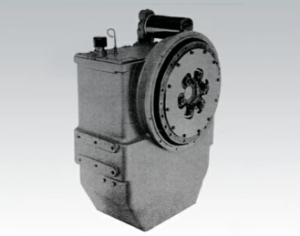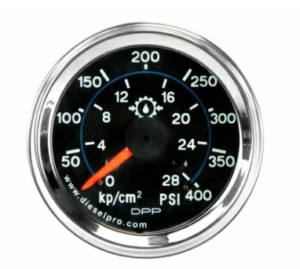
Introduction
Performing routine maintenance on the Twin Disc MG516 and MG5161 marine transmissions is essential for ensuring performance, minimizing downtime, and extending the lifespan of your gear. In commercial marine environments, the difference between a reliable powertrain and catastrophic failure can often come down to a skipped oil change or a clogged filter.
This in-depth section is your complete guide to preventative maintenance for the Twin Disc MG516, including oil change intervals, filter element replacement procedures, and a visual inspection checklist designed to catch wear before it turns into failure.
Disclaimer: Always refer to the OEM service manual for exact torque values, oil specs, and component tolerances. This article is intended to be a practical, high-level guide to routine care and service.
Parts Catalog for Twin Disc MG516 Marine Transmissions
Rebuilt Twin Disc MG516 Marine Transmissions
Plate Kit For Twin Disc MG516 Marine Transmission
Gasket Kits For Twin Disc MG516 Marine Transmission
Oil Change Intervals for Twin Disc MG516 Marine Gear

Changing the transmission oil is the most critical and frequent maintenance task for your MG516 or MG5161. The oil not only lubricates moving components but also powers the hydraulic clutch actuation system. Over time, oil degrades and becomes contaminated with metal particles, clutch debris, and thermal breakdown byproducts.
Recommended Oil Change Intervals
Initial Break-In Period
- First Change: After 25 hours of operation (brand new or after rebuild)
- This removes metal shavings, debris, and residues from assembly compounds.
Routine Operation Intervals
- Every 250 hours or every 3 months, whichever comes first
- This is the standard interval for vessels operating under normal commercial use.
⚙️ Heavy-Duty or Severe Conditions
- Every 150–200 hours if your vessel:
- Tows or pushes heavy loads (tugboats, trawlers)
- Operates continuously in reverse
- Works in high-temperature climates
- Experiences frequent shift cycling
Annual Maintenance
- Even if hours are low, change oil at least once per year to prevent moisture buildup and oil breakdown.
Best Practices for Changing Oil
1. Warm Up the Transmission First
- Run the engine for 15–20 minutes to warm the oil
- Warm oil drains faster and carries more contaminants with it
2. Use a Clean Catch Pan with High Capacity
- The MG516 holds approximately 18–22 quarts (17–21 liters) of oil
- Use a low-profile oil catch basin with anti-splash lip
3. Access the Drain Plug Safely
- Locate the magnetic drain plug on the bottom of the gear housing
- Wear gloves and safety glasses to avoid hot fluid burns
4. Inspect the Magnetic Plug
- Look for fine metallic particles (normal)
- Look for large metal shavings or chunks (indicative of gear or clutch damage)
5. Replace Sealing Washer
- Always use a new sealing washer on the drain plug to prevent future leaks
6. Fill with Correct Oil
- Twin Disc recommends SAE 30 or SAE 40 non-detergent motor oil
- For cold climates, use SAE 10W30 or 15W40
- Avoid ATF or synthetic unless explicitly approved by Twin Disc
7. Check Level with Dipstick or Sight Glass
- Fill to upper level on dipstick, but do not overfill
- Recheck after running engine 10 minutes and topping off if needed
8. Log the Service
- Keep a logbook noting date, hours, oil type, quantity used, and technician’s name
Pro Tip: Use oil analysis kits every 2–3 oil changes to monitor wear metals and plan for proactive part replacement.
Filter Element Replacement for Twin Disc MG516 Marine Gear
The hydraulic oil filter is your first line of defense against contamination, internal wear, and hydraulic failure. A dirty or clogged filter can reduce clutch engagement pressure, cause overheating, and lead to poor gear performance.
Types of Filters Used
The MG516 uses an in-line spin-on oil filter or cartridge-style hydraulic filter, depending on configuration.
- Spin-On Filters: Most common; easy to replace like an automotive oil filter
- Cartridge Filters: Housed in metal body with removable element
Note: Always use quality aftermarket or OEM-matching filters to avoid bypass failure or pressure starvation. Diesel Pro Power offers high-performance filter elements specifically designed for Twin Disc marine transmissions.
Filter Replacement Interval

Rebuilt Twin Disc MG516 Marine Transmissions
Plate Kit For Twin Disc MG516 Marine Transmission
Gasket Kits For Twin Disc MG516 Marine Transmission
- Every 250 hours under normal use
- Every 150 hours for harsh duty vessels
- Change with every oil change to prevent recontamination
Filter Replacement Procedure
1. Locate the Filter Housing
- Usually mounted externally on the transmission or nearby bulkhead
- Check hose connections for signs of leakage or abrasion
2. Prepare for Fluid Loss
- Place absorbent pads and drip trays below the filter
- Some oil loss is inevitable when removing the filter
3. Remove the Old Filter
- Use a proper oil filter wrench
- Turn counterclockwise until the filter is loose
- Wipe down the mounting base to remove all oil and debris
4. Inspect O-Ring Surface
- Make sure the old O-ring comes off with the filter
- Clean sealing surface completely—never install a new filter on a dirty or pitted surface
5. Prime the New Filter
- Fill the new filter with transmission oil
- Lightly oil the rubber gasket to ensure proper seal and torque
6. Install the New Filter
- Spin on until gasket contacts base
- Tighten an additional 3/4 turn by hand or to manufacturer torque spec
- Do not overtighten—this can crush the gasket or warp the housing
7. Check for Leaks After Startup
- Run the engine and inspect the filter for leaks
- Shut down and recheck oil level; top off if needed
Caution: Never operate the transmission without a filter in place—even for short tests.
Visual Inspection Checklist for Twin Disc MG516 Marine Gear

Rebuilt Twin Disc MG516 Marine Transmissions
Plate Kit For Twin Disc MG516 Marine Transmission
Gasket Kits For Twin Disc MG516 Marine Transmission
Regular visual inspections help catch early signs of trouble before catastrophic failure occurs. Even if you’re not doing a full service, visually inspecting the transmission on a regular basis—especially before long voyages or peak work seasons—can alert you to potential problems.
Suggested Inspection Frequency
| Interval | Action Type |
| Weekly | Visual walk-around |
| Monthly | Full inspection checklist |
| Pre-Departure | Engine room review |
| Post-Service | Leak and pressure check |
External Inspection Points
Oil Leaks
- Check around input and output shaft seals
- Inspect filter base, drain plug, and sight glass
- Trace oil trails to source—don’t just wipe and ignore
Housing Cracks or Corrosion
- Use flashlight and mirror to inspect case seams and mount flanges
- Saltwater corrosion should be cleaned and treated immediately
Flange and Coupling Bolts
- Look for shiny threads or signs of bolt movement
- Torque-check flange bolts every 6 months
Oil Cooler and Lines
- Inspect for bent fins, oil seepage, or broken hose clamps
- Replace brittle or bulging hoses immediately
Mounting Bolts and Isolation Bushings
- Loose mounts cause vibration and misalignment
- Check torque and replace bushings if cracked or oil-soaked
Internal Clues (Non-Invasive)
Check Oil Level and Color
- Use dipstick or sight glass
- Healthy oil should be amber to light brown and semi-transparent
- Milky oil = water contamination
- Dark, burnt smell = overheating
Listen for Unusual Noises
- Whining, grinding, or chattering at idle or during engagement
- Use mechanic’s stethoscope to localize
Monitor Shifting Behavior
- Delayed or harsh engagement may indicate clutch wear
- Slipping under load = low pressure or worn clutch plates
Documentation and Record-Keeping
- Log all inspections with findings, actions taken, and technician notes
- Include photos of wear areas, leaks, and filter conditions
- Maintain a running hours log for all components
Advanced Preventative Checks
For vessels with high operating hours, additional proactive inspections can prevent future issues:
1. Shaft Runout Measurement
- Use dial indicator on output flange
- Excess runout indicates worn bearings or bent shaft
2. Hydraulic Pressure Testing
- Connect pressure gauge to test port
- Check pressure in neutral, forward, and reverse at idle and 1800 RPM
- Refer to OEM spec (usually 250–310 PSI engaged, 15–50 PSI idle)
3. Infrared Temperature Scan
- Scan cooler lines, case surface, and oil filter
- Temperatures >220°F indicate cooling system issue
4. Oil Analysis
- Use lab test to monitor wear metals, viscosity, acid number
- Great for predicting internal clutch or gear degradation
Seasonal Maintenance Tips
If your vessel is seasonal or laid up for extended periods:
- Change oil before layup to remove moisture and acids
- Fog the system with oil mist if possible to prevent corrosion
- Cap breather vents to block humidity
- Tag filter and drain plug with service date and oil type
Common Maintenance Mistakes to Avoid
❌ Skipping oil changes because oil “looks clean”
❌ Reusing filters or sealing washers
❌ Ignoring minor leaks
❌ Overfilling or underfilling oil
❌ Forgetting to prime filter before startup
❌ Not checking pressure after filter replacement
Maintenance Supplies Checklist
Stock your boat or shop with these essentials:
- SAE 30/40 Non-Detergent Oil (10 gallons)
- Oil Filter (2–3 spares)
- Sealing Washers and Drain Plug Gasket Kit
- Hydraulic Pressure Gauge
- Shop Rags, Gloves, Funnels
- Oil Analysis Kits
- Maintenance Logbook
- Digital Torque Wrench
- LED Flashlight or Headlamp
Diesel Pro Power stocks maintenance kits and individual parts for the Twin Disc MG516, including aftermarket filters, seals, and complete gasket sets.
Summary
Routine maintenance is the key to reliable, long-lasting performance from your Twin Disc MG516 Marine Gear. By following oil change schedules, replacing filters, and conducting regular inspections, you’ll drastically reduce the likelihood of unexpected failures, costly repairs, and dangerous downtime on the water.
This guide provides the practical how-to knowledge needed by marine mechanics, engineers, and commercial vessel operators. Keep your toolkit stocked, your logs up to date, and your eye on the details—and your transmission will reward you with years of dependable service.

Rebuilt Twin Disc MG516 Marine Transmissions
Plate Kit For Twin Disc MG516 Marine Transmission
Gasket Kits For Twin Disc MG516 Marine Transmission
Videos About Twin Disc Transmissions
6 Reasons Your Twin Disc Transmission Has Low Oil Pressure
7 Reasons Your Twin Disc Transmission Is Overheating
3 Reasons Your Clutch Plates in Your Twin Disc Transmission Are Making Excessive Noise
Bull Gear On A Twin Disc Transmission
Rebuilt Twin Disc Transmissions



 Free US Calls: 1-888-433-4735
Free US Calls: 1-888-433-4735 International: 305-545-5588
International: 305-545-5588